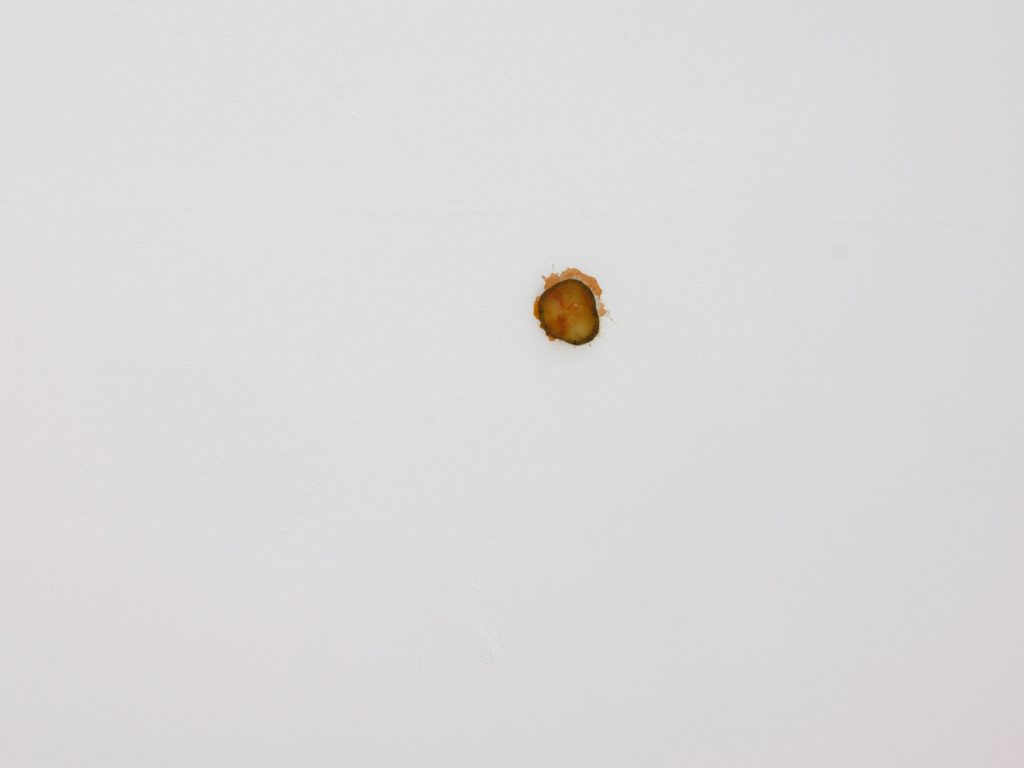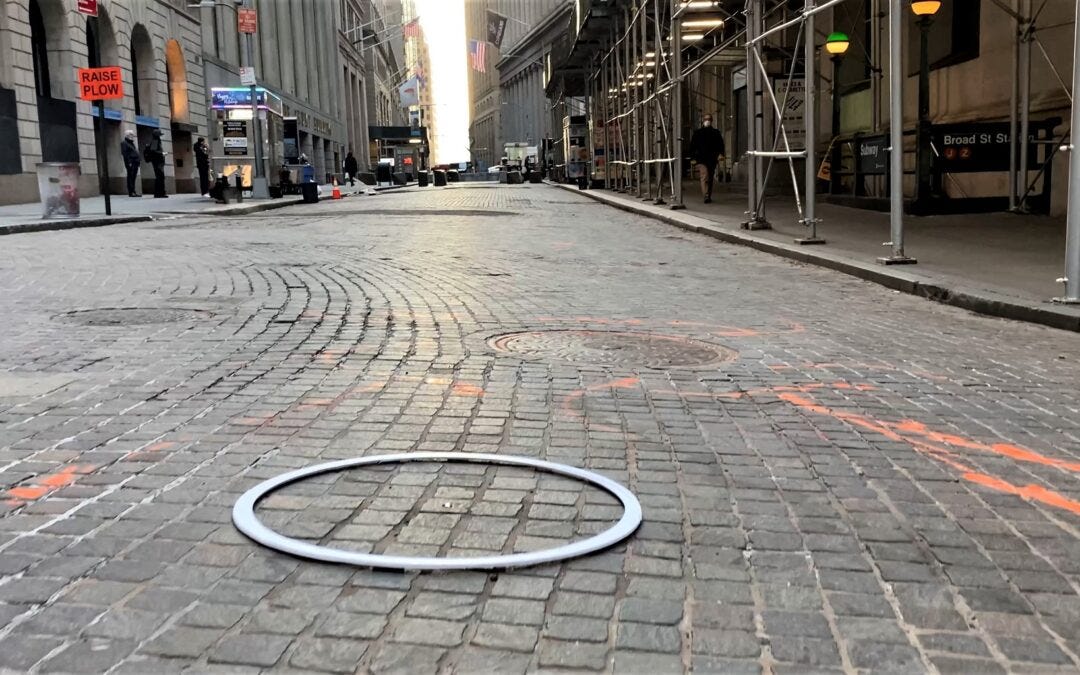Art world news: The US$6,300 pickle and the €15,000 'invisible sculpture'
An Australian artist pulled a pickle from a McDonald’s cheeseburger and slapped it on a gallery’s ceiling, raising its value to US$6,300
Australian artist Matthew Griffin pulled a pickle from a McDonald’s cheeseburger, according to Artnet News, and slapped it to the ceiling of a gallery for an exhibition last July 2022. The piece is just the size of a quarter but comes with a price tag worth much more: NZ$10,000 (US$6,300 or PHP349,000 now).
The artwork, simply called “Pickle,” was on view at Auckland’s Michael Lett Gallery in a group show presented by Griffin’s dealers, Fine Arts Sydney.
Drawing on a long history of mordant ready-mades, from Marcel Duchamp’s 1917 “Fountain” urinal to the US$120,000 banana Maurizio Cattelan taped to the wall of an Art Basel Miami booth in 2019, Griffin’s “Pickle” is meant to stoke conversations about “the way value and meaning is generated between people,” Fine Arts Sydney director Ryan Moore told the Guardian.
“Generally speaking, artists aren’t the ones deciding whether something is art is not,” the director said. “Whether something is valuable and meaningful as artwork is the way that we collectively, as a society choose to use it or talk about it.”

The lucky collector-investor of Griffin’s artwork won’t be given the exact pickle, but rather instructions for how to recreate the artwork in their own space — a gesture that elevates the object beyond those that could be found on any McDonald’s ceiling.
“It’s not about the virtuosity of the artist standing there in the gallery throwing it to the ceiling,” Moore concluded. “How it gets there doesn’t matter, as long as someone takes it out of the burger and flicks it on to the ceiling.
“The gesture is so pure, so joyful — that is what makes it so good.”
An Italian artist auctioned off an ‘invisible sculpture’ for €15,000
Last year, according to Artnet News, the 67-year-old artist Salvatore Garau sold an “immaterial sculpture” — which means it doesn’t exist.
To be fair, the artist might disagree on conceptual grounds. For Garau, the artwork, titled “Lo sono” (which translates to “I am”), finds form in its own nothingness. “The vacuum is nothing more than a space full of energy, and even if we empty it and there is nothing left, according to the Heisenberg uncertainty principle, that nothing has a weight,” he told the Spanish news outlet Diario AS. “Therefore, it has energy that is condensed and transformed into particles, that is, into us.”
“Lo sono” went up for sale at the Italian auction house Art-Rite. The pre-sale estimate valued the piece between €6,000-9,000, according to AS, but competing bidders pushed the price tag up to €15,000 (US$15,300 or PHP849,000 now).
The lucky collector-investor went home with a certificate of authenticity and a set of instructions: the work, per Garau, must be exhibited in a private house in a roughly five-by-five-foot space free of obstruction.
“When I decide to ‘exhibit’ an immaterial sculpture in a given space, that space will concentrate a certain amount and density of thoughts at a precise point, creating a sculpture that, from my title, will only take the most varied forms,” the artist went on.
If you thought that was artsy speak, he goes on to draw a rather lofty comparison to the work: “After all, don’t we shape a God we’ve never seen?” he added.
“Lo sono” isn’t the only artwork of its kind in Garau’s oeuvre. At the Piazza Della Scala in Milan, the artist exhibited “Buddha in Contemplation,” a similarly invisible sculpture demarcated by a square of tape on a cobble-stoned walkway.
He also installed “Afrodite Cries” in front of the New York Stock Exchange. The effort, evidenced by an empty white circle, was supported by the Italian Cultural Institute.
“You don’t see it but it exists; it is made of air and spirit,” he explained in a video documenting the piece. “It is a work that asks you to activate the power of the imagination, a power that anyone has, even those who don’t believe they have it.”
This article is excerpted, edited, and sourced from Artnews. The content is for general informational and entertainment purposes only and should not be construed as art investment advice.





